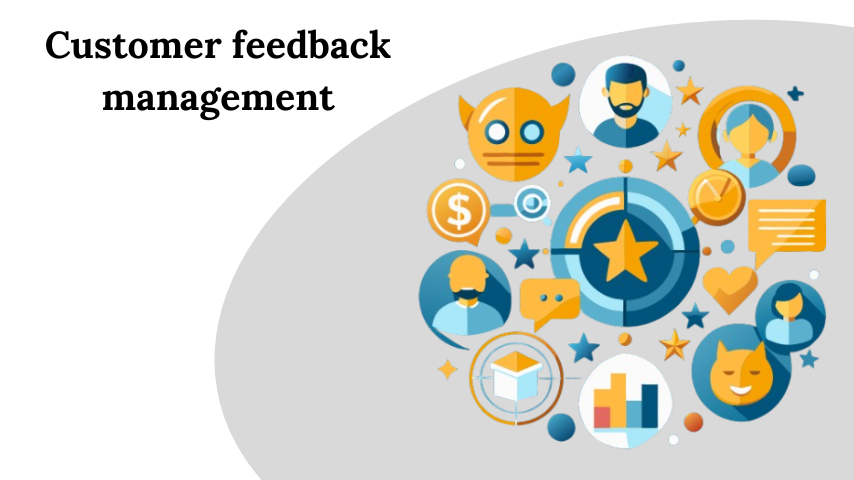
Positive feedback is a powerful tool that can transform organizations, boost employee morale, and drive continuous improvement. In this comprehensive guide, we’ll explore how positive feedback works, its benefits, and how to implement it effectively using modern customer feedback management system and proven techniques.
Positive feedback is more than just praise—it’s a structured approach to reinforcing desired behaviors and outcomes. When implemented correctly, it creates a cycle of improvement that benefits both individuals and organizations. This systematic approach to recognition and encouragement has become increasingly important in today’s fast-paced business environment.
The Psychology Behind Positive Feedback
The effectiveness of positive feedback is rooted in behavioral psychology. When people receive genuine recognition for their efforts and achievements, their brains release dopamine, creating a natural reward system that motivates them to repeat successful behaviors. This psychological mechanism makes positive feedback an incredibly powerful tool for driving performance and engagement.
Key Components of Effective Positive Feedback
To maximize the impact of positive feedback, organizations should focus on these essential elements:
Specificity and Timing
Effective positive feedback must be:
- Immediate or as close to the desired behavior as possible to create a clear connection between actions and recognition
- Specific enough to highlight exactly what was done well, allowing for replication of success
- Relevant to the individual’s goals and the organization’s objectives
- Actionable, providing clear guidance for continued improvement
Authenticity and Consistency
The power of positive feedback lies in its authenticity. Recipients can easily distinguish between genuine appreciation and empty praise. Organizations should develop a culture where feedback is:
- Sincere and based on actual achievements
- Delivered consistently across all levels of the organization
- Supported by concrete examples and observations
- Aligned with company values and objectives
Implementing a Positive Feedback System
Leveraging Technology
Modern organizations increasingly rely on sophisticated customer feedback management system to streamline and organize their feedback processes. These systems help:
- Track and analyze feedback patterns
- Ensure consistent delivery of recognition
- Measure the impact of positive feedback initiatives
- Connect feedback to business outcomes
Creating a Feedback-Rich Environment
To foster a culture that values and promotes positive feedback:
- Train managers and employees in effective feedback techniques
- Establish regular feedback sessions and check-ins
- Create multiple channels for giving and receiving feedback
- Recognize both individual and team achievements
The Impact of Positive Feedback on Business Success
Employee Engagement and Retention
Research shows that organizations with strong positive feedback cultures experience:
- Higher employee satisfaction rates
- Improved retention of top talent
- Enhanced team collaboration
- Increased innovation and creativity
Performance and Productivity
Regular positive feedback contributes to:
- Accelerated skill development
- Increased confidence in decision-making
- Higher productivity levels
- Better customer service outcomes
Best Practices for Giving Positive Feedback
The Feedback Formula
Follow these steps to deliver effective positive feedback:
- Begin with specific observations about the behavior or achievement
- Explain the impact of their actions on the team, organization, or customers
- Connect the feedback to broader goals and objectives
- Encourage continued growth and development
Common Pitfalls to Avoid
When implementing positive feedback systems, watch out for:
- Generic or vague praise that lacks specificity
- Delayed feedback that loses its impact
- Inconsistent recognition practices
- Over-reliance on automated systems without personal touch
Measuring the Success of Positive Feedback Initiatives
Key Performance Indicators
Track these metrics to evaluate your feedback program:
- Employee engagement scores
- Performance improvement rates
- Customer satisfaction levels
- Team productivity metrics
- Retention rates
Continuous Improvement
Regularly assess and refine your feedback processes by:
- Gathering input from employees about the feedback system
- Analyzing patterns in your customer feedback management system
- Adjusting approaches based on measured outcomes
- Incorporating new best practices as they emerge
How often should positive feedback be given?
Positive feedback should be given regularly, but not so frequently that it loses meaning. Aim for meaningful recognition at least once per week for direct reports, with additional spontaneous feedback when warranted by specific achievements.
Can too much positive feedback be harmful?
While positive feedback is generally beneficial, it must be genuine and earned. Excessive or unwarranted praise can diminish its impact and may even reduce motivation. Focus on quality over quantity.
How can remote teams maintain effective positive feedback?
Remote teams can maintain effective feedback through:
- Regular virtual check-ins
- Digital recognition platforms
- Written appreciation messages
- Video calls for important recognition
- Utilizing customer feedback management system tools designed for remote teams
What’s the relationship between positive and constructive feedback?
Both types of feedback are essential for growth. Positive feedback reinforces successful behaviors, while constructive feedback addresses areas for improvement. The key is maintaining a healthy balance, with positive feedback generally outweighing constructive criticism.
Conclusion
Positive feedback is a powerful tool that, when implemented effectively, can transform organizational culture and drive substantial improvements in performance, engagement, and satisfaction. By understanding its psychological foundations, following best practices, and leveraging modern technology like customer feedback management system, organizations can create a sustainable feedback culture that promotes growth and success.
The key to success lies in maintaining authenticity, consistency, and relevance in your feedback practices. Remember that positive feedback is not just about making people feel good—it’s about reinforcing behaviors that drive organizational success and creating a workplace where everyone can thrive.
As you develop your positive feedback initiatives, focus on creating systems that can scale while maintaining the personal touch that makes recognition meaningful. With the right approach and tools, positive feedback can become a cornerstone of your organization’s success strategy.